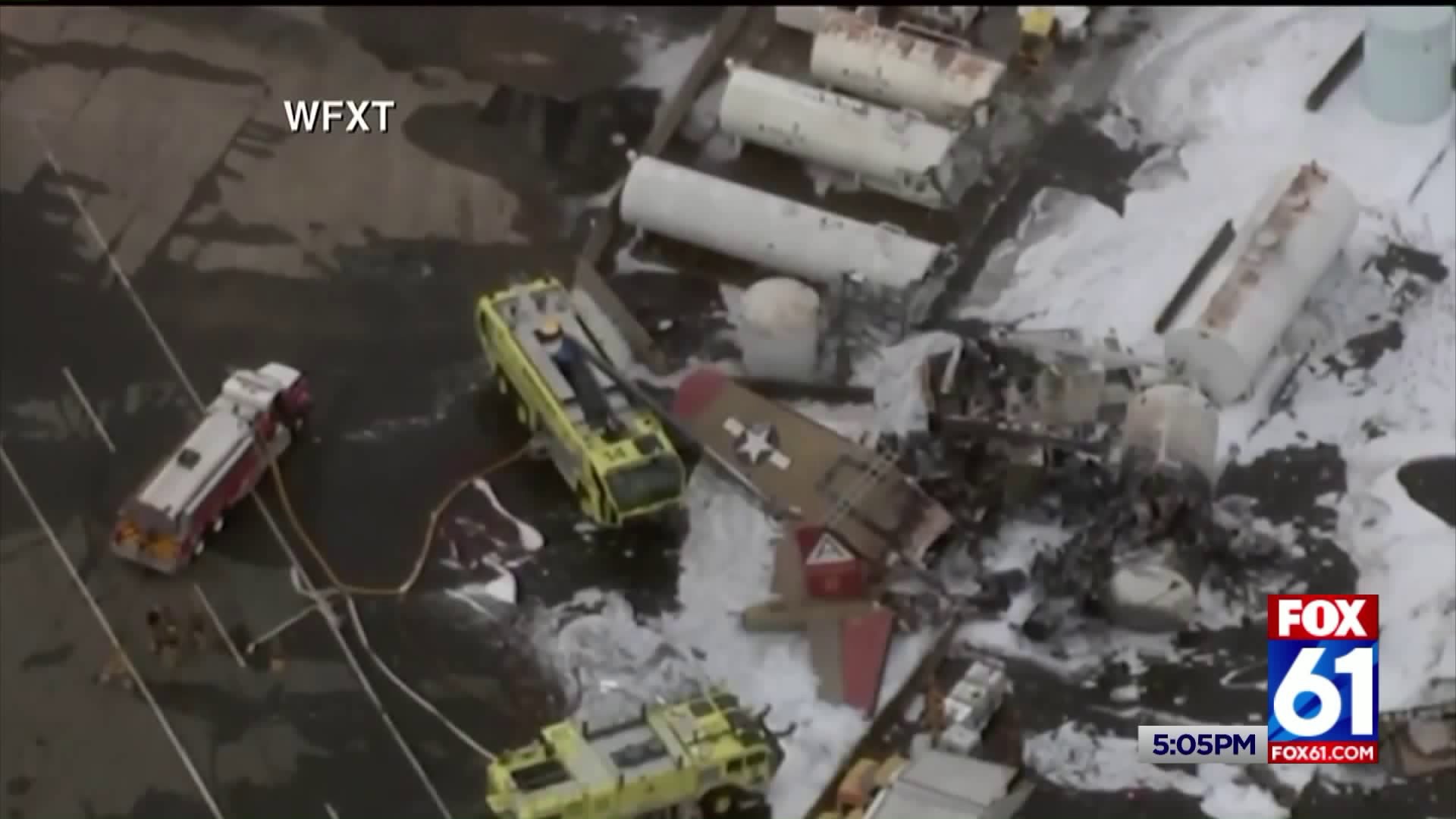WINDSOR LOCKS — As the crash investigation continues at Bradley, FOX61 is learning more about the B-17 bomber and it’s historical reliability, or lack there of.
The fact finders at NTSB had boots on the ground Thursday to determine what brought down the B-17 Flying Fortress with 13 people on board.
The pilot reported a problem with an engine. The plane had four engines. UConn Engineering Professor Lee Langston told FOX61 it can fly on three working engines in flight but this was takeoff.
“This plane is trying to gain altitude and you need speed to get lift on the wings,” said Langston.
A relic of a bygone era, the vintage WWII craft is equipped with antiquated piston engines that are plagued by reliability issues.
“Piston engines fail frequently,” said Langston. “Even with the best of maintenance.”
Langston worked at Pratt & Whitney back in 60’s when piston engines were being phased out. He’s published on the topic. Back in WWII, ships would be stationed in the ocean for the sole purpose of piston engine emergencies.
Langston said, “Both in the Pacific and the Atlantic that were just there for looking at weather but also they were contacts for crashing planes.”
A piston engine uses rods and cylinders that rapidly move up and down to create combustion. They sometimes misfire at different times which can create vibration.
Modern day engines rotate.
“Nowadays with the jet engine and airline pilot will go through his entire career probably without having an engine failure,” said Langston.
From crash investigation to environmental cleanup. DEEP Emergency Response Coordinator Donald Thigpen and his crew we’re down by Rainbow Brook.
“We are succeeding. We are making good progress we have everything contained.”
They are trying to contain toxic PFAS firefighting foam from getting to the Farmington River.
“When they deployed the foam onto the plane itself it went into the catch basins which migrate into an outfall area that lead into the water,” said Thigpen.
They’ve stretched what’s called ‘containment booms’ — a barrier, and are pumping affected water into 21,000 gallon frack tanks.
“So far it’s an undetermined amount If you see foam give us a call,” said Thigpen.
And it’s not just firefighting foam, they are working to contain the high-octane fuel that spilled and the chemicals from the de-icing facility that the plane crashed into.
In the mean time, residents are being advised not to eat fish from the Farmington River.

